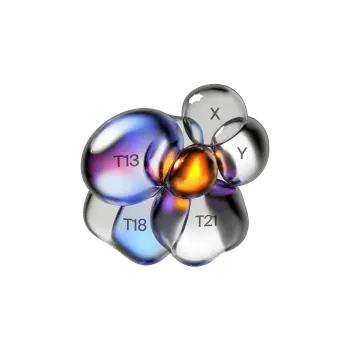Quick version
The sex chromosomes XX and XY play a crucial role in our biological development, but the process is complex and can vary greatly between individuals. By understanding the scientific basis behind these chromosomes, we can better appreciate the diversity of human development.
XX chromosomes: An individual with two X chromosomes usually develops into a female.
XY chromosomes: An individual with one X and one Y chromosome usually develops into a male.
Regardless of genetic makeup, it is important to remember that each individual's value goes far beyond their chromosomal makeup.
Chromosomes are structures within cells that contain our genetic information. Humans have a total of 46 chromosomes which are divided into 23 pairs. Of these, a pair of sex chromosomes determine our biological sex. For females this pair is usually XX, while for males it is usually XY.
What are XX and XY?
XX and XY refer to the specific combinations of sex chromosomes. The XX combination means that the individual has two X chromosomes, which typically leads to female development. On the other hand, an XY combination means that the individual has an X and a Y chromosome, resulting in male development.
- XX chromosomes: An individual with two X chromosomes usually develops into a girl/woman.
- XY chromosomes: An individual with one X and one Y chromosome usually develops into a boy/man.
How is the gender actually determined?
The process of determining the gender already begins at fertilization when the sperm from the father fuses with the egg from the mother. The egg always contains an X chromosome, while the sperm can contain either an X or a Y chromosome. If the sperm carries a Y chromosome, the resulting embryo will have XY chromosomes and develop into a boy, while an X chromosome will lead to XX chromosomes and a female development.
Hormonal factors influence sexual development
Research shows that a particular gene, called SRY, found on the Y chromosome, is important for developing male characteristics. The SRY gene starts the production of testicles, which then make male hormones. These hormones cause the body to develop male features. A study from 1990 showed that the SRY gene is the main factor that controls male development. If the SRY gene is missing, the body instead follows the female line of development.
However, it is not only the SRY gene that plays a role. Several other genes, such as SOX9, DAX1 and WNT4, also affect sexual development. These genes can create variations in how masculine or feminine traits are expressed. For example, some people with XY chromosomes (which usually develop into boys) can develop female features if these other genes don't work normally – and vice versa for some with XX chromosomes.
Hormonal influence during fetal development
In addition to chromosomal factors, hormones also affect a large part during fetal development. In fetuses developing testes, hormones such as testosterone are secreted, which direct the development of masculine structures. Fetuses that develop ovaries have lower levels of testosterone, which promotes the development of feminine structures. Abnormalities in these hormonal levels can cause variations in sex development, regardless of the individual's chromosome set.
Epigenetics and the influence of environmental factors
Although sex determination is initially determined at conception, gene expression can be influenced by epigenetic factors later in life. Epigenetics, which can be controlled by factors such as diet, stress and lifestyle, affects which genes are turned on or off without changing the DNA sequence itself. These changes can affect sex-specific characteristics such as puberty and fertility and can sometimes enhance or suppress specific traits depending on external factors.
Chromosome variations - Beyond XX and XY
There are also several genetic variations in addition to the typical XX and XY combinations. For example, people with Klinefelter syndrome may have an extra X chromosome (XXY), which can affect male fertility and hormone balance. Turner syndrome (X0) means that an X chromosome is missing, which affects female development. Other variations include XYY syndrome, XXX syndrome, and mosaicism, where some cells can have different sets of chromosomes within the same individual. Many of these variations give rise to unique physiological and medical properties and can affect development in different ways.
Blood tests during pregnancy for chromosomal variations
Modern techniques such as NIPT (Non-Invasive Prenatal Testing) enable early detection of sex chromosome variations during pregnancy. This can be valuable for parents who want information about potential sex chromosome-related conditions and to prepare for possible medical needs.























